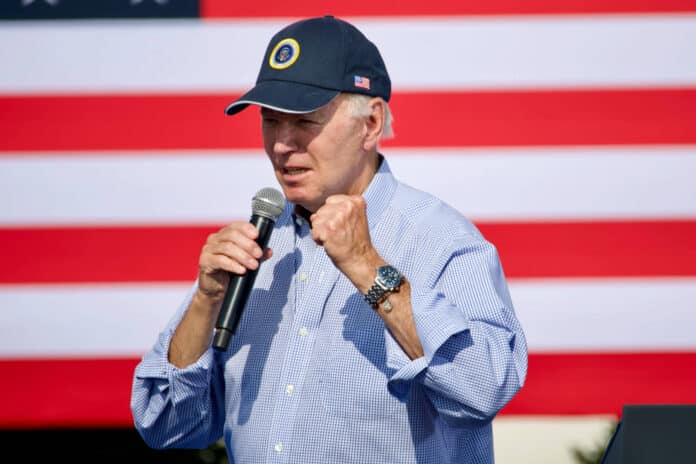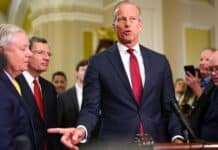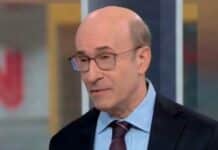
(Daily Caller News Foundation) — The U.S. economy grew less than previously thought in the first quarter of 2024 amid a slowdown in consumer spending, the Bureau of Economic Analysis (BEA) announced Thursday.
![]()
Gross domestic product (GDP) was revised down in the first quarter from 1.6% to 1.3% year-over-year in a sign that the economy is not as strong as initial estimates indicated, according to a release from the BEA. Economists originally expected growth in the first quarter to be around 2.2%, more in line with the above trend growth seen in the third and fourth quarters of 2023, which were 4.9% and 3.4%, respectively.
The revision was due to new information that shows that consumer spending, private inventory investment and federal government spending were lower than initial estimates, while state and local government spending, nonresidential and residential fixed investment and exports were slightly greater than original tallies, according to the BEA. Current-dollar GDP was also revised down to 4.3% from 4.8%, and real gross domestic income totaled just 1.5% in an initial estimate from the BEA.
Disappointing GDP reports have spurred fears that the economy is entering a period of stagflation marked by slow economic growth and high inflation. Inflation measured at 3.4% year-over-year in April, staying stubbornly above 3% since it peaked under President Joe Biden at 9% in June 2022.
Federal Reserve Chair Jerome Powell pushed back against speculation that the economy is undergoing stagflation following the Fed’s May meeting, pointing to low unemployment and decelerating inflation. Biden has also tried to downplay the state of the economy, particularly inflation, blaming corporate greed for rising prices, prompting the Fed Bank of San Francisco to disprove that claim by comparing historical trends.
Gross domestic income continues to lag far behind gross domestic product, and the latter is below its pre-pandemic trend despite being fueled by a debt binge for the last several years; seems less likely that GDI catches up and more likely that GDP catches down… pic.twitter.com/mzyx2a76CC
— E.J. Antoni, Ph.D. (@RealEJAntoni) May 30, 2024
In an attempt to bring inflation back down to around 2%, the Fed has placed its federal funds rate in a range of 5.25% and 5.50%, a 23-year high, which has put pressure on consumers and businesses to slow spending. The hike in the federal funds rate has increased the cost of credit across the board, making it more expensive to take out debt, such as through credit cards.
The cumulative amount of debt held by Americans totaled $17.69 trillion in the first quarter, with $1.12 trillion of that being on credit cards. The share of people who were behind 90 days or more on their credit card payments in the quarter jumped to 10.7%, outdoing the pandemic high of 10% in the first quarter of 2021.
Job growth has also slowed as of late, with the U.S. adding just 175,000 nonfarm payroll jobs in April, far lower than the 242,000 that were expected, while the unemployment rate ticked up slightly to 3.9%. In April, there were fewer gains in government jobs than in previous months, contributing largely to the slowdown, with March adding 303,000 new jobs.
The White House did not immediately respond to a request to comment from the Daily Caller News Foundation.










